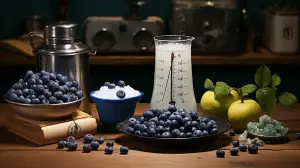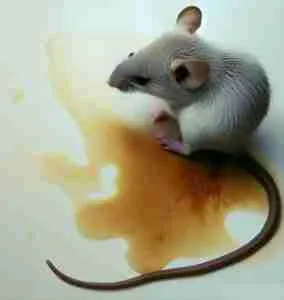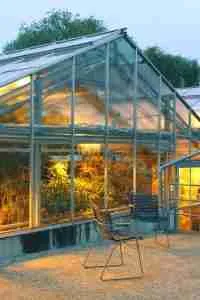Have you ever wondered how a tiny seed transforms into a towering tree? The process of plant growth is actually quite magical and involves stages like sprouting, vegetative growth, and flowering.
In this blog post, we’ll decode the mystery behind “how plants grow”, exploring concepts from photosynthesis to seeds’ germination. Keep reading; Mother Nature has some intriguing secrets to share!
Contents
ToggleKey Takeaways
- Plants grow from seeds, which contain a baby plant and food to help it grow.
- Photosynthesis is how plants make their own food using sunlight, water, and carbon dioxide.
- Hormones play a big part in how plants grow, aiding in flowering, root growth, and overall growth and repair.
- Environmental factors like light, temperature, water, and nutrients affect plant growth.
The Basics of Plant Structure

A seed is the starting point of plant growth, containing all the necessary genetic information and nutrients for a new plant to develop and get water for its initial growth.
What is a Seed?
A seed is much more than what we see. It’s a baby plant in a tiny package, ready to come to life. Seeds come from grown plants, often originating from the bud, and carry the same traits as their parent plants. Inside each seed is an embryo or a young plant, protected by an epidermis layer.
This small living part, where cells grow and divide, stays fast asleep until the right conditions wake it up. There is also food stored inside that gives the baby plant energy to start growing, all wrapped in a protective coat called the seed coat.
Seeds wait for water, light, and warmth before they start sprouting roots and shoots, which continue to grow and eventually turn into big plants! So seeds play a key role in plant growth by acting as starting points of life for new plants.
The Process of Photosynthesis
Photosynthesis is how plants make their food, with the xylem transporting water and nutrients essential for this process. They use light from the sun for this. The green part of plants, called chlorophyll, catches the sunlight, while the phloem transports the synthesized sugars throughout the plant. This energy then turns water and carbon dioxide into glucose and oxygen.
This process has two main parts. First are the light-dependent reactions. These happen when there is sunlight. Sunlight splits water into hydrogen and oxygen in these steps. After that comes the Calvin cycle.
It does not need light to work. During this time, more energy gets made with ATP adenosine triphosphate and glucose is produced too.
Lastly, small holes in a plant’s leaves called stomata and the vascular system play crucial roles in photosynthesis and nutrient transport by letting gases move in or out of the plant.
Growing Plants: Insights

Hormones, especially those in the apical regions, play a vital role in regulating plant growth and development, while plants also respond to external stimuli to adapt and thrive.
The Role of Hormones
Hormones play a big part in how plants grow, regulating cell growth and development. These are chemicals made by the plant. They make changes in growth and development happen. Five hormone groups work together for this purpose.
They are auxin, gibberellins, cytokinins, abscisic acid, and ethylene. These hormones can decide when a plant will flower or get old. They help roots to grow too. Hormones also shape every organ of the plant body from leaves to fruits!
Growth Responses
Plants have a remarkable ability to respond to their environment and adjust their growth accordingly. They do this through what scientists call “growth responses.” These responses can be triggered by various factors such as light, temperature, touch, gravity, and even chemicals in the air.
For example, if a plant senses that it is not getting enough sunlight, it will grow toward the light source in order to maximize its photosynthesis. Similarly, if a plant is being touched or pushed by something nearby, it may change its growth pattern to avoid the obstacle.
This flexibility allows plants to adapt and survive in different conditions.
Factors Affecting Plant Growth
Environmental factors, nutrient availability, and the presence of water and sunlight can all significantly impact the growth and development of plants.
Environmental Factors
The surroundings greatly influence the health and progression of plants. Light, temperature, water, humidity, and nutrition all impact how well a plant can grow. The intensity of sunlight, the duration of light exposure, and even the quality of light can affect photosynthesis and ultimately determine how well a plant can produce food.
Temperature also influences plant growth – increased temperatures generally promote faster growth. Water availability is essential for plants as it is involved in processes like photosynthesis and nutrient uptake.
Additionally, high levels of humidity can have an impact on plant growth, especially in regions where there is significant water loss through transpiration. Overall, these environmental conditions are important factors that directly influence the health and vitality of plants.
Nutrient Availability
The presence of essential nutrients is pivotal for plant growth. Plants need a good supply of nutrients to grow properly. The quality and quantity of nutrients in the soil can have a big impact on how plants develop.
If there aren’t enough nutrients available, plants may grow slowly or not at all. Nutrient deficiencies can cause problems like stunted growth, yellowing leaves, and lower yields. It’s important to understand nutrient availability so we can optimize plant growth and get the most out of our crops.
Water and Sunlight
Two primary elements that significantly impact plant development are water and sunlight. Water is essential for photosynthesis, which is how plants use energy from the sun to make their own food.
During photosynthesis, plants convert sunlight into stored energy in the form of carbohydrates. This process cannot happen without water. Additionally, water plays a vital role in transporting nutrients and minerals from the soil to different parts of the plant.
The availability of water in the soil influences the growth hormones of the plant, determining whether it will grow or wither. Without enough water, plants can wilt, experience stunted growth, or even die.
Respiration & Its Significance
Plant growth is crucial for the sustenance of life on Earth, as it provides food and oxygen for humans and animals, ensuring a healthy environment. By understanding how plants grow and develop, we can appreciate their significance and contribute to their well-being.
Fun Activity for Kids
Teaching kids about the importance of plant growth and development can be made fun with engaging activities, like exploring a greenhouse or setting up a mini one at home. Children can learn through hands-on experiments like growing plants in the classroom or creating their own mini-garden at home.
They can also explore the world of plants through arts and crafts, making leaf rubbings, creating flower collages, or even understanding how a lawnmower affects grass growth. Gardening is another exciting activity where children can grow their own vegetables or flowers, learning about science and nature while enjoying the outdoors.
These activities not only stimulate their minds but also help them develop new skills and a deeper understanding of ecology and botany.
Fun Facts About Plants
The plants are pretty amazing! Did you know that they come in all shapes and sizes? From the tiny mosses to towering trees, there’s so much variety. And here’s something really cool: some plants can even live for thousands of years! Take the bristlecone pine tree, for example.
It can survive for over 5,000 years – imagine being around since ancient times!
Plants also have incredible abilities. They can “talk” to each other by releasing chemicals into the air when they’re under attack from insects or disease. This helps nearby plants prepare their defenses too.
How clever is that?
Another fun fact is that plants have a superpower called phototropism. When a plant grows towards the sunlight, it’s not just due to good luck – it’s because of hormones! These special chemicals help guide their growth towards the light source.
Summary & Conclusion
In summary, understanding the process of plant growth is essential for successful cultivation. Environmental factors like light, temperature, water, and nutrition play a crucial role in plant growth and development.
By considering these factors and providing optimal conditions, we can enhance photosynthetic efficiency, nutrient uptake, and cell expansion in plants. This knowledge helps us tackle environmental stress and improve cultivation techniques.
Gaining insights into genetic regulation further enhances our understanding of how plants respond to their surroundings. Overall, comprehending plant growth is vital for unraveling the intricate interactions between genetics and the environment that drive healthy plant development.
FAQs
1. What are the main factors that contribute to plant growth?
The main factors that contribute to plant growth include sunlight, water, nutrients from the soil, and carbon dioxide from the air.
2. How do plants get their food?
Plants make their own food through a process called photosynthesis. They use sunlight, carbon dioxide from the air, and water absorbed by their roots to produce glucose (sugar) as energy.
3. What is germination and how does it happen?
Germination is the process of a seed sprouting and growing into a new plant. It happens when a seed absorbs water, which activates enzymes inside it to begin cellular processes like cell division and elongation.
4. How long does it typically take for a plant to grow from seed to maturity?
The time for a plant to grow from seed to maturity can vary depending on the type of plant. Some plants may take weeks or months while others can take several years.
5. Can plants grow without soil?
Yes, some plants can grow without soil using other mediums such as water (hydroponics) or special nutrient solutions (aeroponics). These methods provide essential nutrients directly to the roots without relying on soil.























































